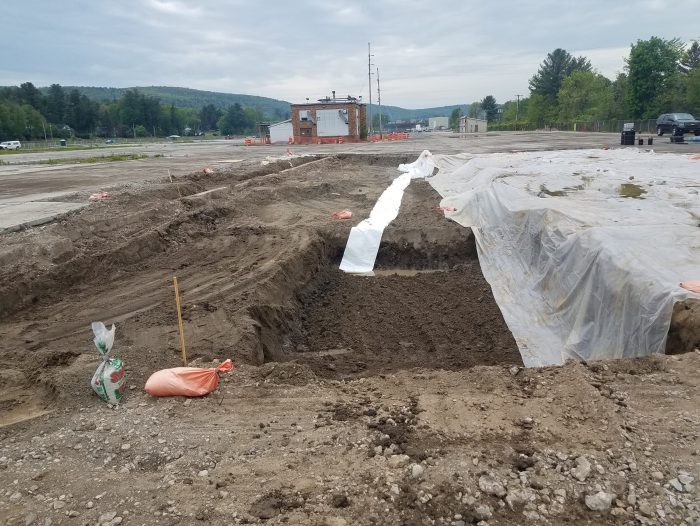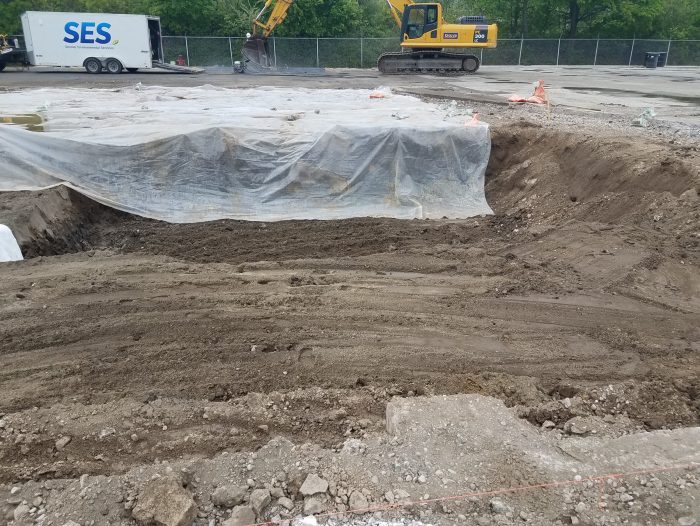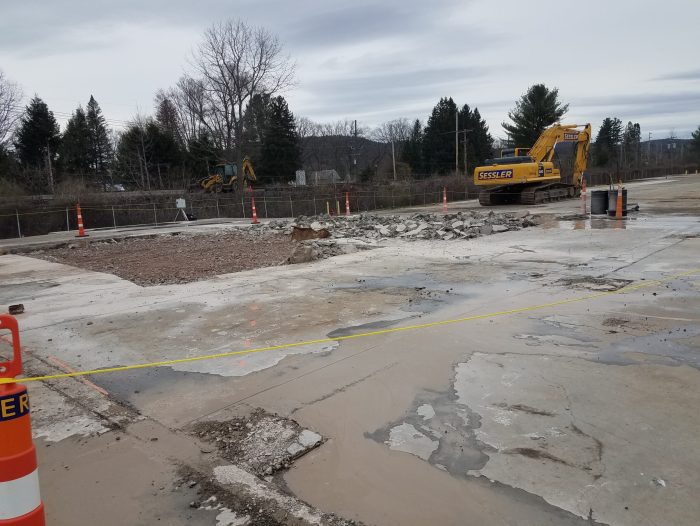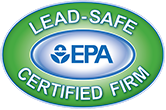PCB Impacted Soils Remediation, Central New York
Project Location: Central New York
Project Highlights:
- Demolition and removal of 350 tons of hazardous PCB-impacted concrete.
- Excavation and management of 815 tons of hazardous PCB soil.
- Excavated contaminated soil in two-foot increments to a depth of six feet and transported it off-site under a hazardous waste manifest.
- Imported clean stone, placed in one-foot layers, and compacted with a remote vibratory tamper during backfilling.
- Restored all concrete slab sections that were removed during remediation.







